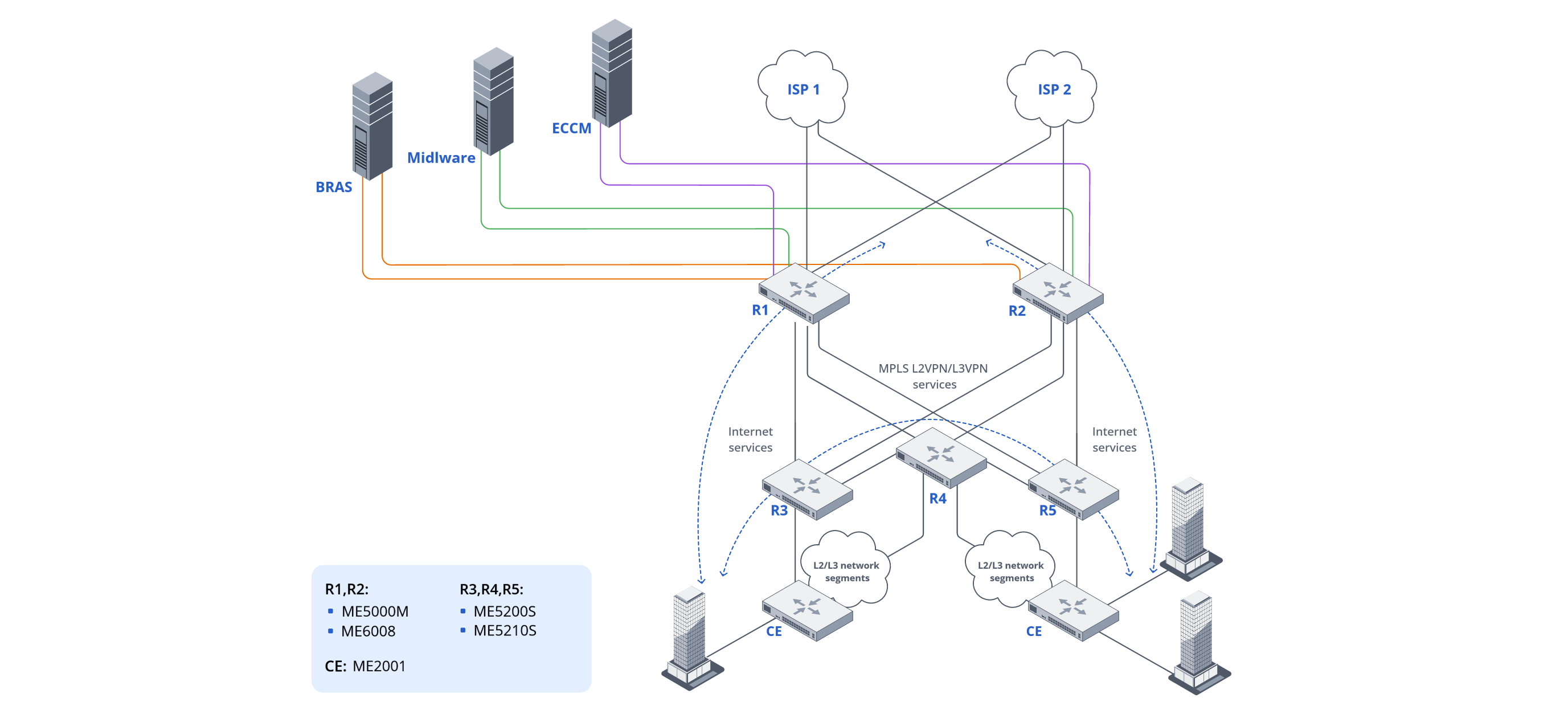Comprehensive solution for deploying MPLS networks of telecommunications carriers


Description
A telecommunications carrier's backbone network forms the basis for subscriber interaction. The main services are Internet access, television, voice and video traffic transmission. For the business segment, Internet access, L2VPN and L3VPN services are also important.
Therefore, the main requirements that carriers have for backbone routers are high performance, reliability, and scalability. To meet these requirements, it is recommended to use the ME line of backbone routers, which support MPLS technology. Let's take a closer look at the solution.
Solution Architecture
Eltex ME series routers are designed for operation in the backbone network. The line includes fixed-configuration models and modular chassis.
ME Modular Routers
Modular chassis are full-fledged platforms for designing the network core, where scalability and reliability are important. They are designed in a standard 19″ eurorack (15U) and can be customized for specific tasks, as well as to increase performance. They feature slots for FMC routing and management modules, LC line cards, as well as service, processor, and ventilation modules.
ME fixed-configuration routers
The fixed-configuration model series includes devices for different network layers: access and aggregation. Some devices can be used as Mobile Backhaul transport in mobile carrier networks or at the Cell Site Gateway layer in 5G mobile networks.
Two more models will be added to the line of fixed-configuration routers in the future. ME2100 (ports: 4x100G and 16x25G) is being developed for the access layer, and ME3005 (ports: 6x100G and 32x25G) for the aggregation layer.
Equipment features
ME series routers do not use software traffic processing, instead they are designed for wire-speed hardware switching. The devices use ASIC traffic processing chips and specialized processors with TCAM memory, which provides the required amount of FIB tables.
The equipment supports all modern dynamic routing protocols: BGP, RIP, IS-IS, OSPF, as well as MPLS and Traffic Engineering, which allow routes to be created taking into account load and SLA requirements. Full implementation of L2VPN/L3VPN provides flexibility when connecting corporate clients. Scalable QoS helps to terminate the significant number of client services.
Reliability and fault tolerance are achieved via fast detection and convergence features. These are primarily ensured by the BFD protocol, which detects failures, and LFA/FRR, a set of technologies for fast rerouting.
ME series routers comply with international standards (3GPP, ITU, IEEE), can be used in multi-vendor networks, and are certified for use in projects of any scale, including implementation in 5G mobile networks.
Support for multi-protocol label routing is the main feature of the entire equipment line. Let's take a look at a classic MPLS network architecture using ME backbone routers.
ECCM network equipment management system
ECCM (Eltex Cloud Configuration Manager) is used to simplify network deployment and administration. This is a centralized management system that makes it possible to view the entire network topology, monitor the status of all devices, differentiate access by role, record administrator actions and quickly update equipment. ECCM automates routine processes, simplifying the operation of the carrier's infrastructure.
General solution scheme
Equipment










